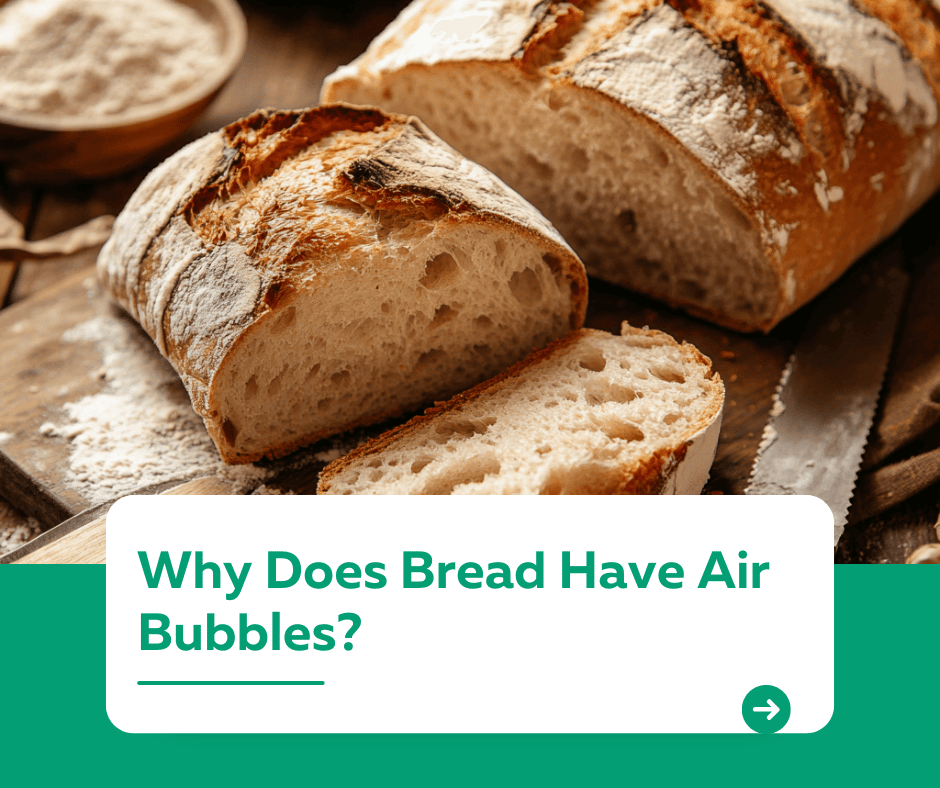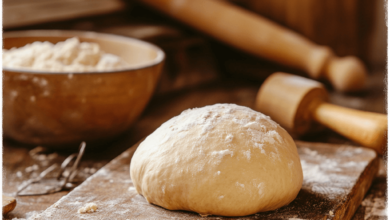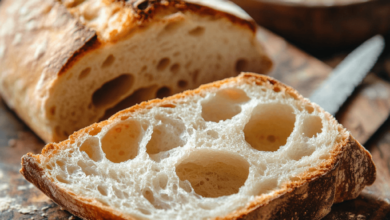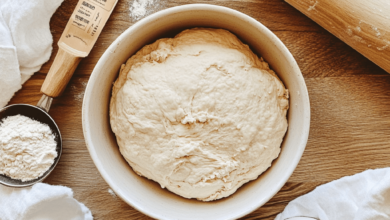
Why Does Bread Have Air Bubbles?

Introduction
“Why does bread have air bubbles?”
Air bubbles in bread are the result of yeast fermentation, a process essential for creating light and fluffy textures. These bubbles give bread its airy structure and improve its overall texture and flavor. In this article, we’ll explain why air bubbles form in bread, their importance, and how to achieve the perfect rise for any type of bread.
1. The Science Behind Air Bubbles
Air bubbles in bread are created by yeast, a microorganism that ferments sugars in the dough.
- How It Works:
- Yeast consumes sugars and produces carbon dioxide gas as a byproduct.
- This gas gets trapped in the dough, forming bubbles that expand during proofing and baking.
- Why It’s Important:
- Air bubbles create the soft, airy texture in bread.
- They contribute to the overall flavor by enhancing fermentation.
2. Factors That Affect Air Bubbles in Bread
Several factors influence the formation and size of air bubbles:
- Type of Yeast:
- Active dry yeast and instant yeast both produce consistent bubbles.
- Sourdough starters create more irregular bubbles due to wild yeast and bacteria.
- Kneading:
- Kneading develops gluten, which traps gas and helps create even bubbles.
- Under-kneading can lead to uneven bubbles, while over-kneading can make the dough too dense.
- Proofing:
- Proper proofing allows gas bubbles to expand evenly.
- Underproofing leads to small, dense bubbles, while overproofing can cause large, irregular holes.
- Flour Type:
- High-protein flours like bread flour create stronger gluten, which holds bubbles better.
3. How to Achieve Perfect Air Bubbles
To create a light, airy bread with well-distributed air bubbles, follow these tips:
1️⃣ Use Quality Ingredients:
- Fresh yeast and high-quality flour are essential for optimal results.
2️⃣ Measure Accurately:
- Ensure proper ratios of flour, water, and yeast for the right dough consistency.
3️⃣ Knead Properly:
- Knead until the dough is smooth and passes the windowpane test.
4️⃣ Control Proofing:
- Allow the dough to rise until it doubles in size. Avoid overproofing.
5️⃣ Bake at the Right Temperature:
- A hot oven helps the dough rise quickly, locking in the air bubbles.
4. Common Issues with Air Bubbles
- Too Many Large Holes:
- Often caused by overproofing or uneven kneading.
- Dense Texture with Few Bubbles:
- Results from underproofing, insufficient kneading, or inactive yeast.
- Irregular Bubbles:
- May occur with sourdough or dough with inconsistent hydration.
Tip: Adjust proofing times and kneading techniques to achieve consistent results.
Conclusion
Air bubbles in bread are a natural result of yeast fermentation, contributing to its soft texture and delicious flavor. By understanding the science behind air bubbles and mastering techniques like kneading and proofing, you can bake bread with a perfect crumb structure every time.
For more bread-making tips and techniques, visit our Kuestion.com.




